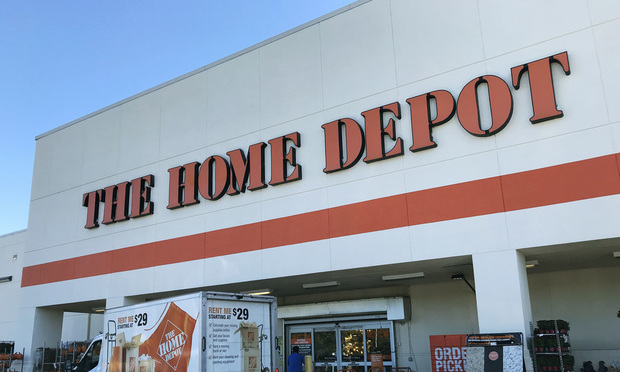(Bloomberg) -- The New York-bound Amtrak train that derailed in Philadelphia, killing seven and injuring more than 200, was traveling at about 100 miles per hour, twice the speed limit, according to an official briefed on the data.
The speed limit on the curve where the accident happened Tuesday night was 50 miles (31 kilometers) per hour, said the official, who asked not to be identified because the information isn’t public. The traincarried 238 passengers.
Mayor Michael Nutter said it was “incredible” that so many people walked away from the accident.
Northeast Regional Train 188, which originated in Washington, went off the tracks about 9:30 p.m., closing part of the busiest passenger-rail corridor in the U.S.
A data recorder is being analyzed at an Amtrak facility in Delaware, Nutter said. That should tell investigators the train’s speed and how the throttle, brakes, horn and bells were applied, said Robert Sumwalt, a National Transportation Safety Board member. The locomotive had a forward-facing camera and its footage will be reviewed.
Sumwalt said NTSB investigators started arriving before 5 a.m. at the scene where an engine and seven cars careened off the tracks. Three rested on their sides and one almost on its roof. One was perpendicular to the others. About 9 a.m., police guided a crane through a barricade toward the derailment.
The wreck turned a Philadelphia neighborhood into a search- and-rescue zone, illuminated by flashlights and spotlights as workers pulled the injured from cars and tried to determine whether others remained trapped. Bloodied passengers hobbled from the wreckage.
Midshipman Killed
“Along the Northeast Corridor, Amtrak is a way of life for many,” President Barack Obama said in a statement. “From Washington, D.C. and Philadelphia to New York City and Boston, this is a tragedy that touches us all.”
One of the passengers killed was identified by the U.S. Naval Academy in Annapolis, Maryland, as a midshipman on leave and headed home. The victim was confirmed as Justin Zemser by his father, Howard, of Rockaway Beach, New York. The family will release a statement later, Howard Zemser said by telephone.
An Associated Press video software architect also was killed. Jim Gaines, a 48-year-old father of two, had attended meetings in Washington and was returning home to Plainsboro, New Jersey. His death was confirmed by his wife, Jacqueline.
Amtrak service between New York and Philadelphia is suspended, sending business travelers and commuters searching for other ways to traverse the East Coast.
Modified service will be provided between Washington and Philadelphia, Harrisburg and Philadelphia, and New York and Boston, according to an Amtrak statement. New Jersey Transit will honor Amtrak tickets between New York City and Trenton.
Amtrak’s accident rate has been inching higher, with 67 in 2014, up from 58 in 2013 and 57 in 2012, according to the Federal Railroad Administration
There were nine derailments in the first two months of this year alone, though none was fatal, according to the agency. Amtrak logged 28 derailments nationwide in 2014, up from 25 in 2013.
Tuesday’s accident was far from Amtrak’s deadliest. In 1993, 47 people died and 103 were injured as rail cars careened off a bridge and into water near Mobile, Alabama.
The mishap in Philadelphia’s Frankford neighborhood is in an area filled with industrial warehouses, auto mechanics and body shops. A 1943 derailment of the Congressional Limited train, which killed 79, occurred nearby.
Right Angle
Mortimer Downey, a transportation consultant who has been deputy U.S. transportation secretary and an Amtrak board member, said investigators would examine the track’s configuration and condition closely. He described the curve near the accident sites as “very sharp.”
“You hit that curve and it’s literally a right angle,” he said.
Amtrak sets lower speed limits on curves, he said, and locomotives on the Northeast Corridor between Washington and Boston are equipped with a speed-control system.
U.S. regulators have pushed railroads to install so-called positive train control systems that automatically control velocity and can stop trains before they crash.
On Tuesday, Michelle Premaza, 33, who lives a quarter-mile away, said she was in her house when she saw and heard the crash.
“I seen a big flash and heard rolling thunder,” Premaza said. “It was crazy.”
Victims were taken to several hospitals. Temple University Hospital treated 54 patients, including one who died, according to a statement from Herbert Cushing, the chief medical officer. Twenty-five patients are still at the hospital, including eight in critical condition, according to spokesman Jeremy Walter.
Hahnemann University Hospital admitted seven patients, one in serious condition, said Gianna DeMedio, a spokeswoman. They suffered varying levels of injuries, mostly burns and fractures.
Two patients were in critical-but-stable condition at Penn Presbyterian Medical Center, according to spokesman Steve Graff.
Ten remained at Aria Health’s Torresdale campus, a trauma center, spokeswoman Maria Cerceo Slade said. One patient is in critical condition at Albert Einstein Hospital and three in fair condition, according to spokesman Kerry O’Connor.
The event that injured them was sudden and violent.
Beth Davidz, of Brooklyn, New York, said she was in the third car. She said it felt like the train was making a wide turn before it turned on its side and slid for yards. Davidz, 35, said she felt herself falling.
“I knew I was alive because I felt dirt in my mouth,” she said.
People used mobile phones to light their way out and climbed onto seats to exit through the windows, Davidz said.
“I came out of it with one shoe and my phone, and I feel lucky,” she said.
--With assistance from David Lerman, Romaine Bostick and Jeff Plungis in Washington and Michelle Kaske in New York.
Want to continue reading?
Become a Free PropertyCasualty360 Digital Reader
Your access to unlimited PropertyCasualty360 content isn’t changing.
Once you are an ALM digital member, you’ll receive:
- Breaking insurance news and analysis, on-site and via our newsletters and custom alerts
- Weekly Insurance Speak podcast featuring exclusive interviews with industry leaders
- Educational webcasts, white papers, and ebooks from industry thought leaders
- Critical converage of the employee benefits and financial advisory markets on our other ALM sites, BenefitsPRO and ThinkAdvisor
Already have an account? Sign In Now
© 2025 ALM Global, LLC, All Rights Reserved. Request academic re-use from www.copyright.com. All other uses, submit a request to [email protected]. For more information visit Asset & Logo Licensing.








